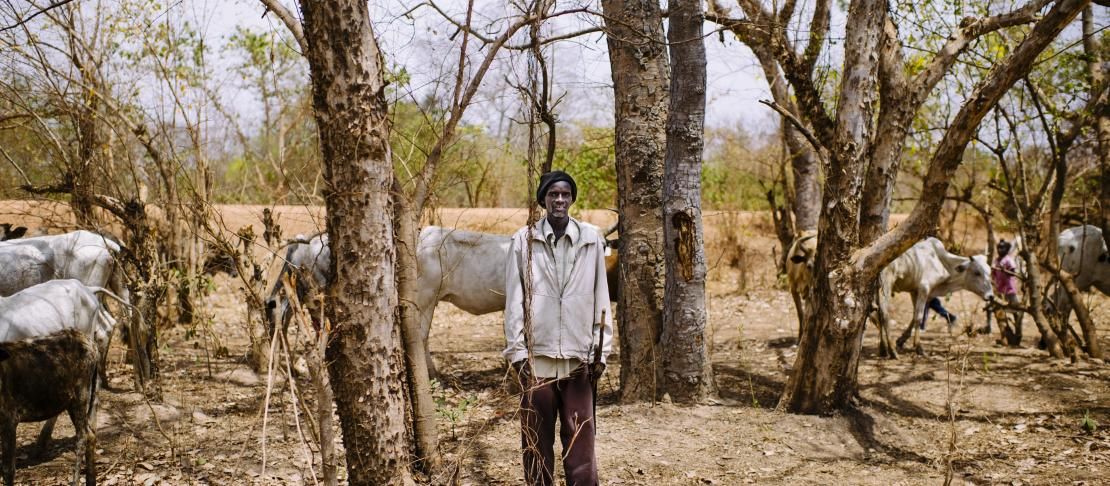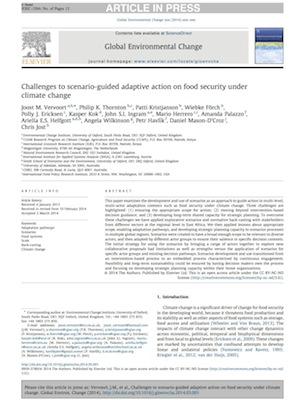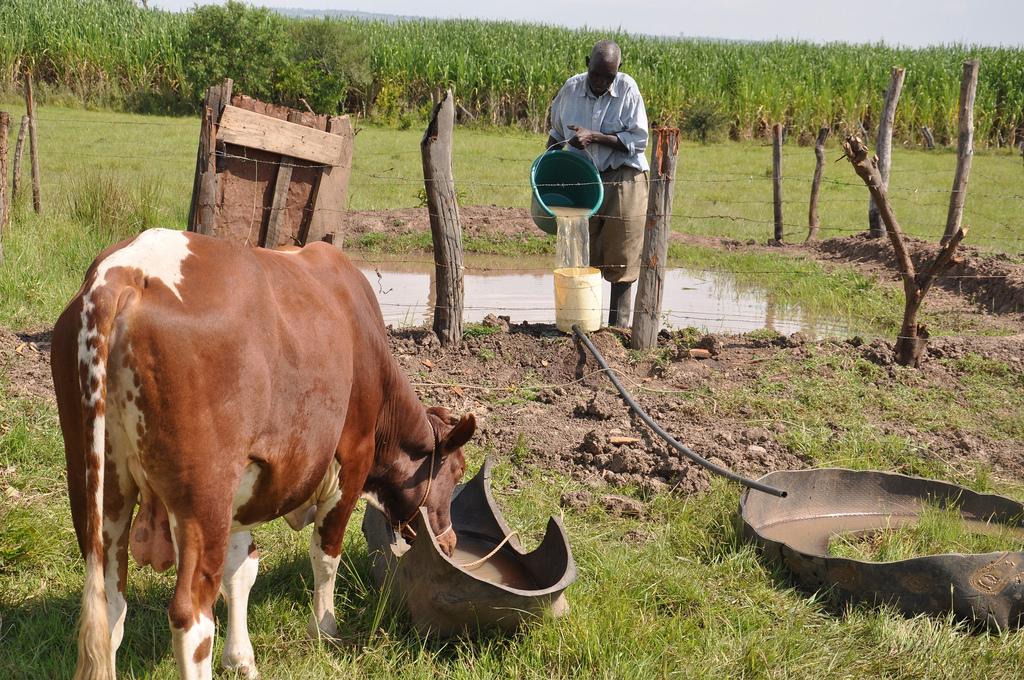Searching for the best climate adaptation options for mixed crop and livestock farmers

A newly released article presents a way to analyze trade-offs between various climate adaptation options directed towards mixed crop-livestock farmers. The analysis can help mixed system farmers better navigate between a number of practices and techniques that are on offer and base their selection on their true needs.
Did you know that mixed farm-systems comprising of both crops and farm animals are holding up the world’s milk and food supply? In fact, they produce over 90% of the world’s milk and 80% of the meat from ruminants, while providing incomes and livelihoods for millions of people in the tropics!
But as vital as these farms are for people’s survival, they are equally as vulnerable to climate change.
Mixed understanding of mixed farm-systems
We don’t fully understand how these systems, and in turn food security, will be affected by climate change and variability. Neither do we know which adaptation option works best in which context. Without knowledge on what works and understanding about the trade-offs of different options, adaptation programs progress through a process of trial and error, sometimes at the expense of farmers.
In an effort to try and address this knowledge gap, Philip Thornton, Theme Leader with CCAFS and Mario Herrero, formerly with the International Livestock Research Institute  (ILRI), put together what we know about climate variability and its effect on food production. They also looked at what agriculture adaptation options are available to farmers today while outlining a way to analyse and compare different adaptation options for mixed systems.
(ILRI), put together what we know about climate variability and its effect on food production. They also looked at what agriculture adaptation options are available to farmers today while outlining a way to analyse and compare different adaptation options for mixed systems.
Their results are presented in the newly released article “Climate change adaptation in mixed crop-livestock systems in developing countries,” published in the Global Food Security journal.
Which adaptation options are available for mixed-system farmers?
The article mentions three areas that are crucial for climate adaptation and the various adaptive measures that are linked to these activities:
- Increasing the resilience of the mixed systems: Through composting manure and crop residues farmers can get more fertile soil. More precision with plants needs for nutrients can not only help boost yields but also has mitigation co-benefits. Controlled release of and placement technologies and using legumes for natural nitrogen fixation, can increase yields and resilience of crops. As rainfall will increase in variability mixed-system farmers can turn to water harvesting and retention by building pools, dams and roof-water harvesting.
- Diversification: Both agricultural and non-agricultural forms of diversification are seen as highly relevant for helping mixed-system farmers adapt to climate change. Adding additional crops and farm activities, planting trees, as well as diversifying diets to include new food sources are mentioned in the article that could be helpful to mixed system-farmers.
- Risk management: Use of weather forecasts and index-based insurance products, if done well and if they are context-sensitive, can function as ways to manage risks related to mixed-system farming.

A mixed-system farmer is increasing resilience on his farm by turning to water conservation. Photo: K. Trautmann
While there are a number of options out there to support farmers adapting to climate change, authors mention that there is very little information available to help farmers manage and select which options work best for their mixed farm.
It is also difficult for farmers to understand the full range of potential impacts these options might have on their food production, adaptation opportunities, and how feasible they are to implement i.e. what adaptation barriers may occur.
In the end, what works in a particular situation is highly dependent on the geographical and socio-economic context of that specific farming system.
Which farm-options work best given certain criteria?
To figure out which options work best given a set of criteria the article looks at a range of available farm responses (many of which have been mentioned above) that mixed farm-systems can implement. They score how these options fare on impact on food security, potential impact on resilience, on promoting diversification, on managing risks, and on providing mitigation co-benefits. The authors also outline potential constraints to adopting these options.
The authors then conduct an analysis looking at all these criteria for four farm-activities, such as use of cross-breed dairy animals, stover (leaves and stalks of field crops) digestibility improvement for animals, grain supplements and use of agroforestry species for livestock feed, and tries to look at how well these activities cover the criteria-areas.
In this particular analysis the use of agroforestry species and stover digestibility improvement are to be preferred above grain supplementation, which includes a number of barriers to implement, has low mitigation and adaptation potential, but could ultimately have a huge impact on production. The option a farmer finds the best also depends on what he wants to achieve in the end.
Figure: Comparison of four adaptation options in mixed crop‐livestock systems in the tropics and subtropics, related to five criteria: size of domain, adoption potential, production impact, mitigation potential, and feasibility. Review the figure and an outline of various adaptive options in the article.
The authors suggest that similar analyses can be done for all the options outlined in the article, to figure out which option works best for these mixed systems given their different contexts, needs and what farmers want to achieve. That way climate adaptation programs and activities and farmers themselves will be better equipped to understand which option has what trade-off and which option will deliver the desired result in that particular context.
Authors argue these adaptation options don’t work in vacuous environments, but need an enabling environment in order to deliver their intended impact, such as coordinated and informed policies, an integrated approach to addressing food security, agriculture and climate change issues, strengthening of local institutions, both formal and informal, and social, institutional and technological innovation.
Learn more about the analysis and which options are available to mixed-farm systems, as well as how high these farm options score on the board given the outlined criteria: Article: Thornton, P and Herrero, M. 2014. Climate change adaptation in mixed crop‐livestock systems in developing countries. Global Food Journal.
Story put together by Cecilia Schubert, Communications Officer CCAFS



